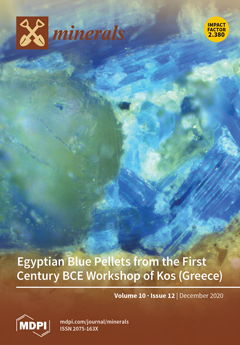Pollution indices are used to assess the influence of the bedrock as a natural source of heavy-metal (
HM), and anthropogenic pollution from ore mining in soils developed from ore-bearing carbonates. The research was conducted in two areas differing in geological setting
[...] Read more.
Pollution indices are used to assess the influence of the bedrock as a natural source of heavy-metal (
HM), and anthropogenic pollution from ore mining in soils developed from ore-bearing carbonates. The research was conducted in two areas differing in geological setting and type of land use in the Upper Silesia Industrial Region, Southern Poland. Physical properties such as pH, total sulfur, total carbon and total organic carbon values, as well as total Zn, Pb, and Cd contents (ICP-OES) for 39 topsoil samples were measured. Contamination factor (
Cf), degree of contamination (
Cdeg), pollution load index (
PLI) and geoaccumulation index (
Igeo), were used to determine the deterioration of topsoil due to
HM pollution. The
HM content exceeded geochemical background levels by 2.5–18.1 times. Very high to moderate topsoil contamination was determined. In a shallow historical mining zone, the relative influence of particular
HM was found to be in the order of Pb > Cd > Zn and, in a deep mining zone, Zn > Cd > Pb. In the topsoil developed over shallow ore bodies, the
HM content was mainly (60%) due to naturally occurring
HM. In the area of deeply buried ore bodies, 90% of the
HM load was related to anthropogenic sources. Zn, Pb and Cd vertical distributions and the patterns of topsoil pollution differ in terms of types of mined ores, mining methods and times elapsed since mining ceased. Pollution indices are an efficient tool for distinguishing soil anthropogenic pollution and geogenic contamination.
Full article





